CD Projekt Red’s redemption feels like it should be written on stone tablets. It’s practically biblical.
How a studio went from delivering one of the most disappointing launches for a major modern game to making gaming history is nothing short of remarkable.
The newly released Phantom Liberty DLC goes far beyond a rework of the game’s troubled 1.0 version. Cyberpunk 2077 has gone from a hatchback with sticky seats to a turbocharged supercar. But to fully appreciate just how dramatic (and unlikely) such a transformation could occur, some context is necessary.
Launch Day
Cyberpunk 2077‘s only competition for worst-ever launch is the Titanic. The game would barely run on most systems, and when it did, it was a buggy mess. The console version of the game was practically unplayable. The PC version wasn’t much better. What you could play felt like the typical run-of-the-mill shooter, and the story read like bad Shadowrun fan fiction.
The world shown in the trailers was likewise absent. Night City was a bland, featureless collection of concrete blocks enveloped in fog half the time. NPCs either strutted around robotically or would break out into T-poses at random.
I struggled through the first 20 hours of the game—getting hit by invisible cars, seeing NPCs that looked like they’d been freshly glazed with icing, and finding myself thinking, for the first time, that there are things not even Keanu Reeves can save.
How could a studio riding high on its reputation from The Witcher 3 have missed the mark so badly? It seemed like Cyberpunk would be a slam dunk.
CD Projekt Red had nine years of development, an astronomical budget of more than $300 million (the Polish government even kicked in $7 million towards the project), and a team that produced one of the most highly acclaimed games ever made in The Witcher 3.
“We are making the best game, no compromises here,” said CD Projekt Red’s Co-Founder Marcin Iwinski in a 2012 video revealing Cyberpunk 2077. With the creator of the original tabletop game, Mike Pondsmith, beside him and lending the project his support, and a veteran team of Witcher devs leading the charge, it seemed like this game couldn’t possibly fail.
A long road to redemption
Nine years later, his words would come back to haunt him. Iwinski, looking much older, responded directly to Cyberpunk’s shortcomings.
“We underestimated the task,” he said, referring to the game’s poor performance on last-gen consoles, his face a mask of disappointment.
While downplaying the issues on PC, Iwinski vowed the developer would make things right and fix the console versions of the game, deliver patches for PC, and a next-gen update for consoles the following year. There was mention of free DLC, but to this day it has yet to materialize.
In an unprecedented move, Cyberpunk 2077 was removed from the PlayStation Store just seven days after its release. A tidal wave of refund requests washed over Sony and Xbox, with both companies pledging to honor them. Cyberpunk reportedly had 8 million pre-orders. Gamers who paid up-front (myself included) rightly felt cheated.
A series of behind-the-scenes mishaps were compounded by the fact CD Projekt Red had seemingly realized serious trouble lay on the horizon and had potentially attempted to cover it up.
In the run-up to release, the developer didn’t allow media to do their own game capture and instead insisted outlets use footage that the studio would provide. According to gamingindustry.biz, “Several media outlets did not take part in the first wave of reviews having refused to sign an NDA that stipulated they would not be able to use their own video footage, instead limiting them to developer-produced B-roll.”
The developer also only ever showed gameplay from either PC or next-gen consoles, deliberately omitting footage captured from PS4 or Xbox One. In a post to Twitter, it admitted to not showing off last-gen gameplay:

A year after Cyberpunk 2077’s release, stock in CD Projekt Red lost 54 percent of its value. The studio also settled a $1.85 million class action lawsuit with their investors.
Despite this and a reputation rivaling people who chew with their mouths open in terms of popularity, the news wasn’t all bad.
The studio wasn’t as badly affected by refunds as the whole fiasco might suggest, and the entire marketing and development budget for Cyberpunk had been recouped in a single day. Sure, CD Projekt Red had to drastically draw down their estimates for how many copies they’d sell in total, but it appeared at least some of their efforts to walk back the damage paid off. And that effort has finally culminated in the form of Phantom Liberty.
Oh, say can you see
Phantom Liberty is, quite simply, a watershed moment in gaming history. Rarely has a studio recovered from such a fall from grace. Many of us wouldn’t have been surprised had the studio simply imploded, crushed by the pressure of its own mistakes and a famously unforgiving gaming public.
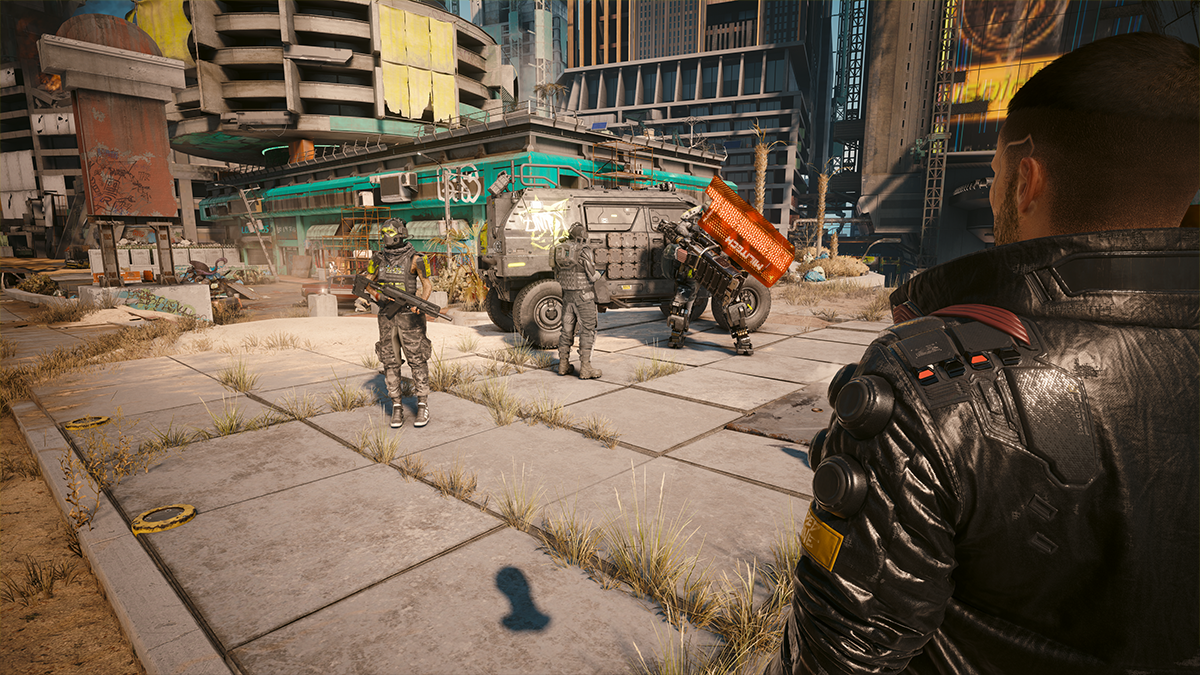
The DLC is very particularly structured—it seems to be entirely geared towards people like me who’d abandoned the game somewhere in the first act. You have the option to start the DLC with a new character that comes with some basic skills and abilities to spare you the level 1-10 grind.
You’re probably familiar with the main campaign’s central premise—you have a chip in your head carrying the digitized soul of anarchist maverick Johnny Silverhand, and it’s gradually destroying your brain.
At the beginning of Phantom Liberty, you get a phone call from a mysterious Netrunner promising you a cure if you come to Dogtown, a walled-off section of Night City ruled by an ex-military group gone rogue.
What follows is a pastiche and tribute to some of the media that inspired Cyberpunk, Escape from New York and Ghost in the Shell, in particular.
Dogtown acts like a hyper-condensed version of Night City. All of the major themes, ideas, characters, conflicts, and intrigue are crammed into something like 30 city blocks of space. Driving around the crumbling ruins puts a sharp focus on the city’s population as well as the forces corrupting it.
We’re far from scheming in a diner about stealing some high-tech MacGuffin while Keanu’s electric ghost belts out sarcastic one-liners. Instead, we’re grounded in a life-or-death struggle that could change the fate of the entire world.
CD Projekt Red has cranked everything up to 11 with Phantom Liberty in terms of pacing, acting, story, and the heady themes it shot for and missed when Cyberpunk 2077 first launched. Phantom Liberty is a deliberately structured experience to reintroduce you to the world of Cyberpunk and ask you, very nicely, to give it another chance.
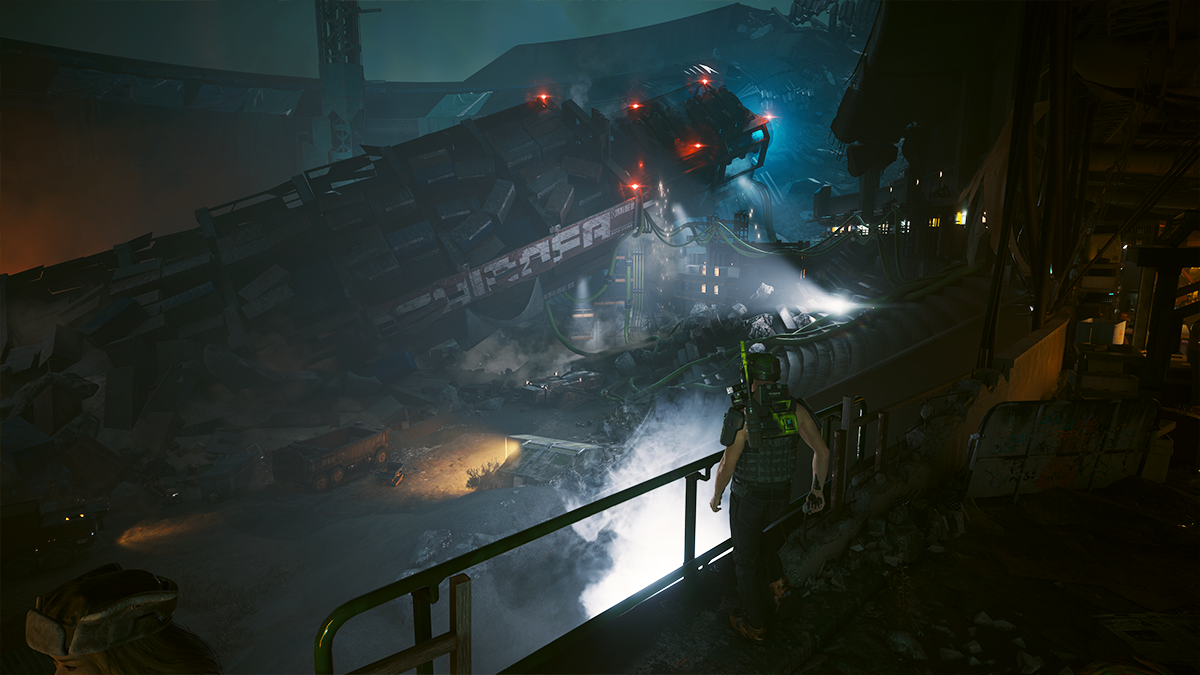
And yes, you should give it that chance. If, for nothing else, just to see the improvements to the game’s look, feel, and gameplay. This is what Cyberpunk 2077 was meant to be—a gritty cross-section of science fiction and film noir, not Deus Ex meets GTA.
It had been a few years since I had loaded up Cyberpunk on my rig, but I’m blown away by it now. This game is gorgeous. My memory’s a little fuzzy when it comes to how it looked at launch, but I remember being underwhelmed.
Some set pieces were alright, but driving around Night City felt more like a kit-bashed version of Hong Kong—all neon and no substance. But with the recent 2.0 update, the game has received the ultimate facelift and is by far one of the prettiest games I’ve ever played.
And this is, I think, what was missing from my original time with Cyberpunk. The visuals left something to be desired in the launch version, despite what CD Projekt Red says about the PC version being well received. I distinctly recall everything looking flat to my eyes, and this was on a brand new $2,000 custom-built PC.
Gameplay-wise, the entire experience has been tightened up. Shooting feels more visceral than it did, with gunfights feeling more like a John Woo flick than the shooting gallery I remember struggling with in the 1.0 version of the game.
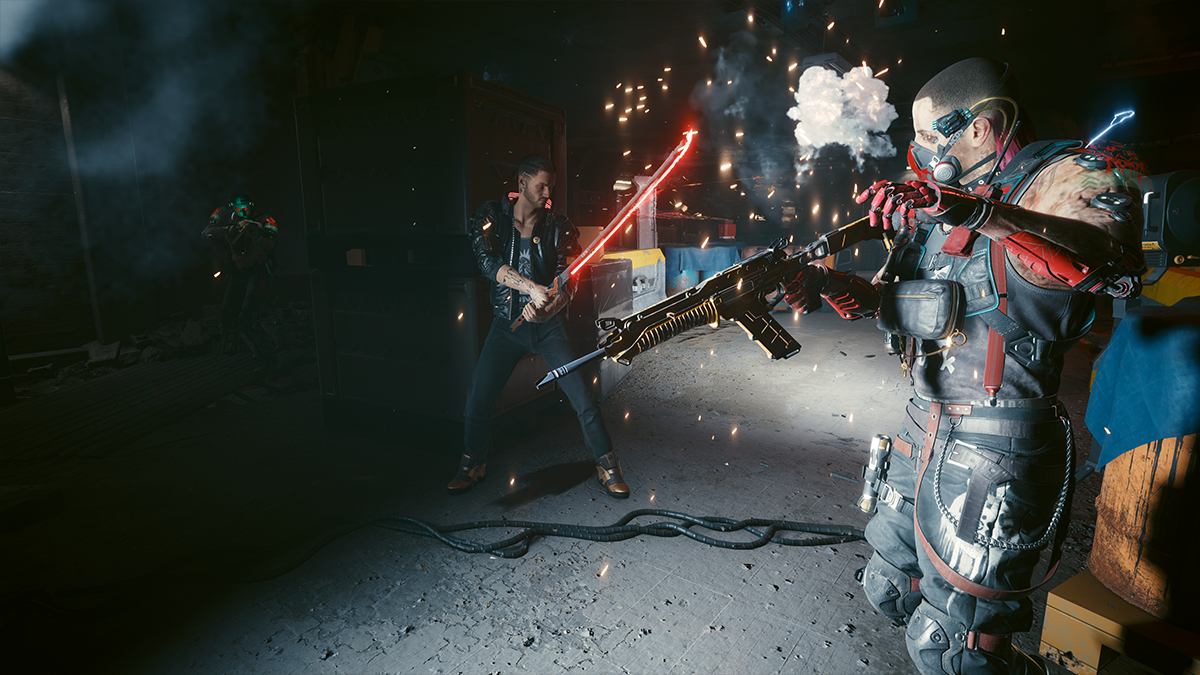
The developer has also made substantial changes to movement with dodges and a double-jump added to your cybernetic repertoire. Rather than bullet sponges who stand in the open emptying their guns, enemies now scramble for cover, blind fire, and can die with just a few well-placed shots.
Combat is more fluid and full of moment-to-moment tactical decisions. Switching between your weapons is still a bit of a chore, but once you find the right blend of guns, the game hits a sweet spot and stays there.
Stealth feels better too, with more responsive and intelligent AI. I can remember sneaking past enemies I was making eye contact with in 1.0. Now, stealthy gameplay quickly goes sideways when you’re spotted, but feels rewarding and tense when done properly.
Hacking, which felt like a distant third option in combat before, now feels more than viable—it’s necessary. When trading lead with a crowd of goons, you’re presented with a menu of options, all of them useful. You can ping one enemy and thus highlight them all in your HUD, cause them to turn on each other, jam their weapons, and even fry their cybernetics.
Sure, you could do most of this stuff when the game first came out, but thanks to the balances to weapons and enemy health (and your new movement abilities), quickhacks are now the perfect tools of opportunity for literally every fight.
Where before, I preferred to slice and blast my way through opponents, I find myself in Phantom Liberty being much more deliberate in my approach. Previously, the game trained me to unload enough brass to be the instrument manager for a marching band, but now, in 2.0, you’re refining your approach with every encounter.
Phantom Liberty is a massive improvement over the base game in every possible way. Story, gameplay, visuals, hacking, leveling, immersion, character design—it’s like getting a steak at a Michelin-star restaurant.
Sure, it’s a piece of meat on a plate, but take a bite, and you realize you’re not eating meat, you’re eating aged Wagyu prepared by a master chef who can make food taste the way classical music sounds.
In short, CD Projekt Red nailed it. I won’t say it’s perfect, but it far exceeded what I could have hoped for even in the best-case scenario.
Dark future
Phantom Liberty makes a compelling case for why you should carry on, even when it seems like things are at their worst. The dystopian themes of Cyberpunk are rightly put front and center, whereas when the game first launched, it felt lost in a muddled attempt at being edgy. You have to admit, Johnny Silverhand’s anti-corporate screeds are very hit or miss.
Phantom Liberty, however, takes the focus off of Keanu (though he’s around plenty for the DLC) and introduces a new cast of characters, including Idris Elba. That gives the game some recognizable star power, but Elba isn’t there to just be a face.
He gives a killer performance and exudes the kind of cool and danger you need to sell a spy thriller. Cyberpunk 2077 is now a fine example of how games are making headway towards being interactive movies.
I stand in awe of what the studio has endured to bring the true vision of its game to life. It ran the race, kept the faith, and fought the good fight. If only more studios would learn from its mistakes and make the kind of massive investments necessary to keep its promises to their customers.
Perhaps this is such a surprise because we live in a deeply cynical time. It’s more and more difficult to believe in the idea of a nation amidst an increasingly digitized society, and that theme is smack dab at the center of Phantom Liberty.
What will you swear an oath to? What would you die to protect? What will America be in 50 years? And why does it seem that despite having the most sophisticated technology ever invented, we can’t even begin to solve our most basic problems? All of those answers and more are waiting for you in Phantom Liberty.



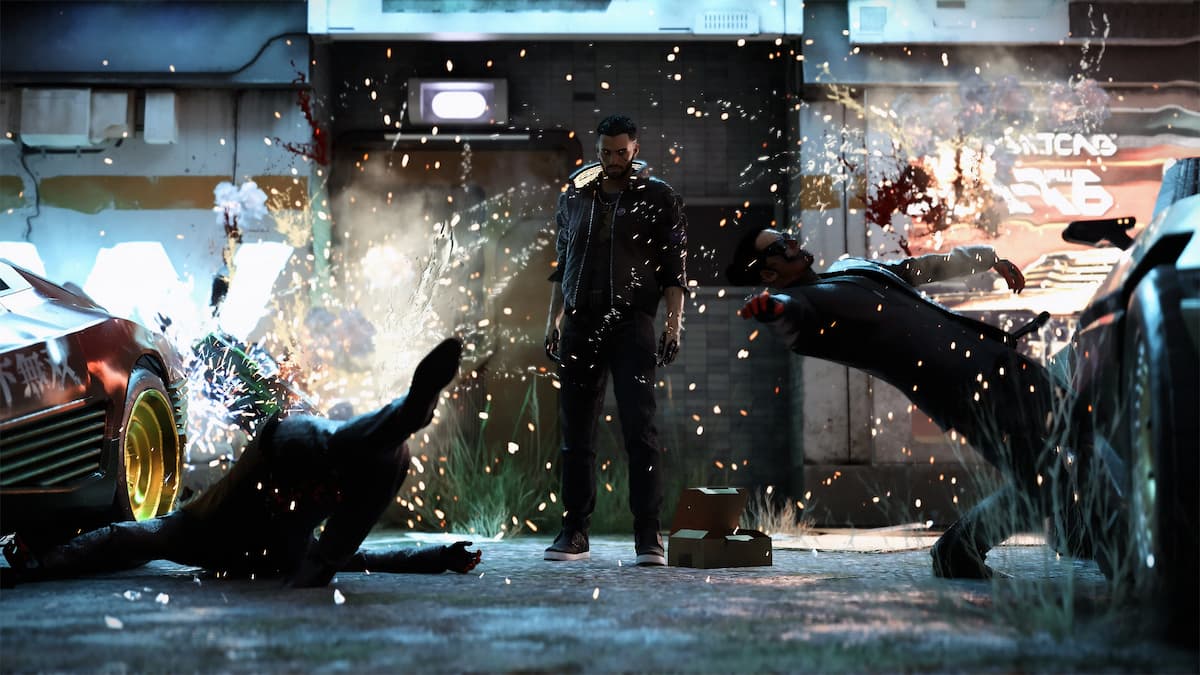

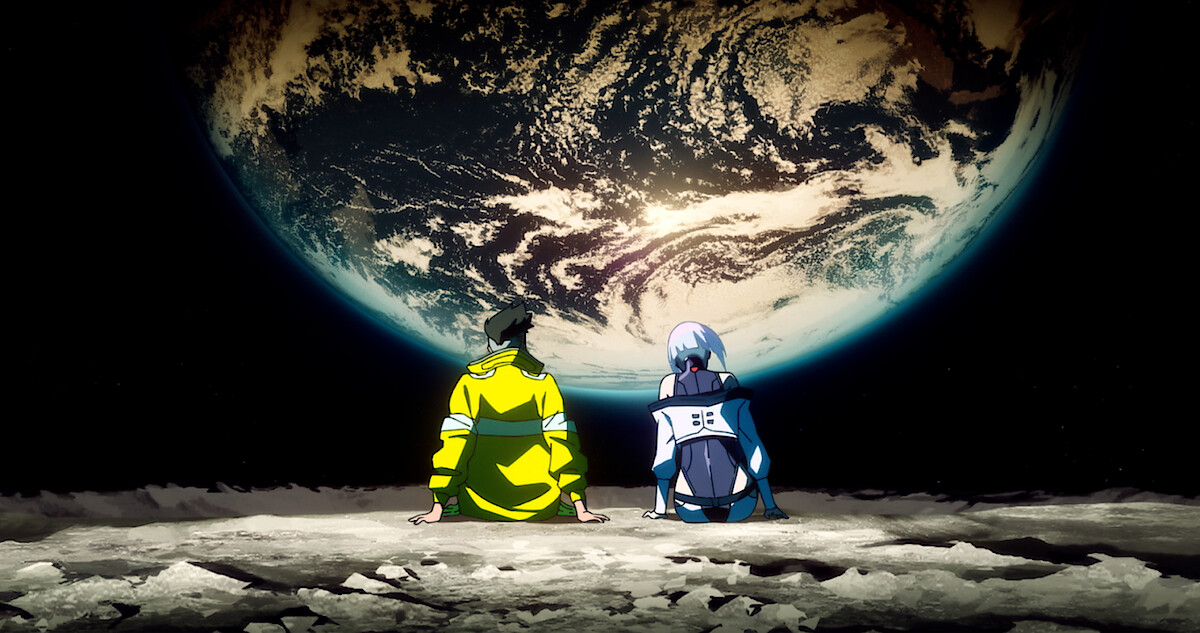

Published: Sep 27, 2023 02:23 pm